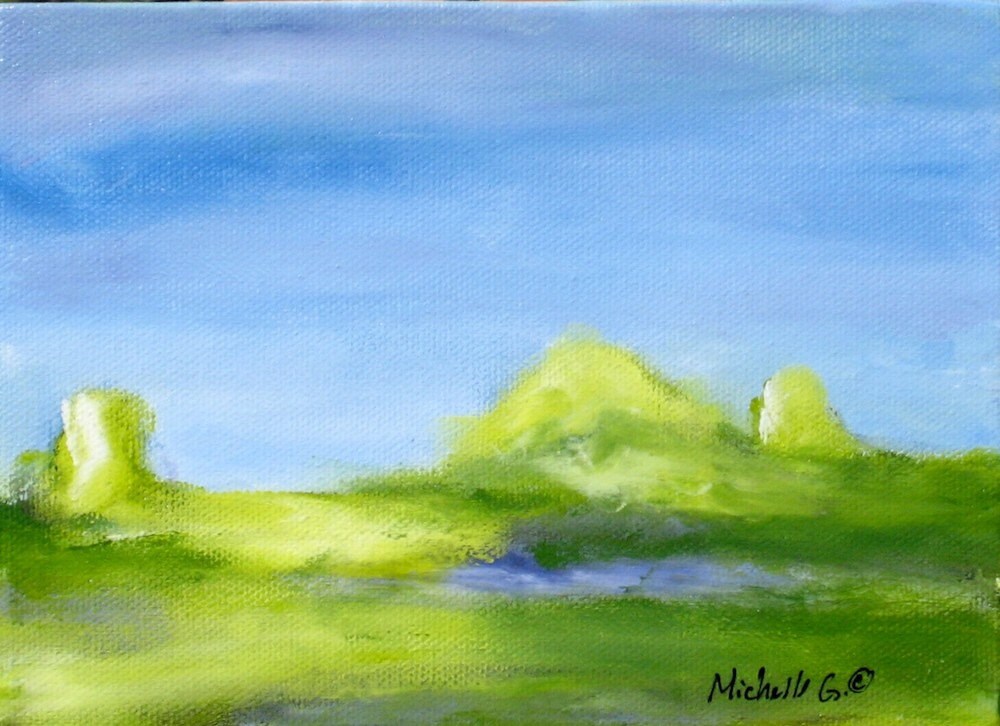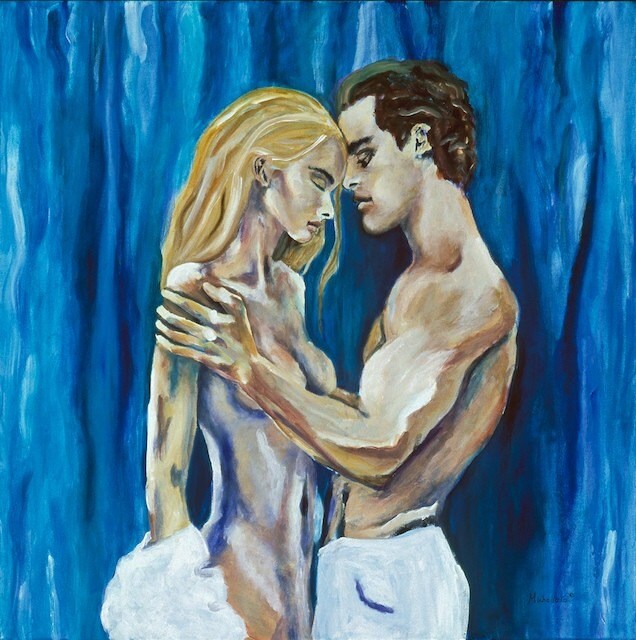 |
|
I used a blue color wash on this painting, which gives it a blue
feel even after layers of paint have been added.
|
The second step in painting is preparing the surface to be painted. Normally for me this means deciding on the size and shape of a gallery-wrapped canvas. And then preparing the canvas for paint.
The first step is determining how big and what size the painting should be. Over the years I have come up with a standard set of canvas sizes that I like to use, for example 24 x 24 and 18 x 36. But at times an image will strike me as needing to be painted and it will take a while to determine what size the image will scale to. This requires math and a ruler to determine the scale of the current image and then translating that into the size of the canvas to use. Yes! Artists use math! For example, a 4 x 6 picture could work well on a 24 x 36 (scale of 6), or 16 x 24 (scale of 4).
Once I have the correct size of canvas to paint on, I then add a layer of gesso, which is very white, heavy paint to the canvas. While the canvas I buy has a layer of paint, it helps to add additional lays prior to painting. It also helps me feel that I own every inch of the canvas at the start of the process. Some artists create many layers of gesso on their canvas and sand down each layer so that the canvas is like glass. I like to work with a slightly textured surface, so I do not sand anything down. But that is a personal preference.
Gessoing the canvas is probably the messiest part of the creation process. It is messy because I am covering every inch of the painting, including all the sides of the canvas. I always end up with white gesso all over myself and my studio floor. (Which is why I always do this process on a drop cloth.)
After the gesso dries I may or may not add a light wash of color to the entire canvas as well. The advantage to adding a wash of color, is if the color is the same as your subject matter you have now saved yourself some time with establishing the middle shade for your art. The possible downside to creating a wash of color, is the entire painting now has that color as an undertone. Which will give your painting a different look than starting from white. Lately I have been forgoing a color wash on my more realistic figurative works, but I continue to use color wash in my abstract figurative paintings.
The last step in preparing the canvas for paint is sketching out the image onto the canvas. Normally this process goes smoothly. But occasionally, once an image is sketched out I decide that I don’t like how it is centered, or I think that a different shape or size of canvas would look better. Sometimes this means erasing my sketch and starting over, and sometimes I find it faster to simply re-gesso the canvas. After I am done grumbling to myself about waiting till I finished the process to figure this out, the end result and changes do make a difference to the overall presentation and the image I’m wishing to evoke.
Because this process works well for an assembly line process, I tend to gesso and sketch multiple paintings at once. Taking me approximately 1/2 a day complete this process.
For Step one see How To Paint A Painting? Step One: Deciding What To Paint









